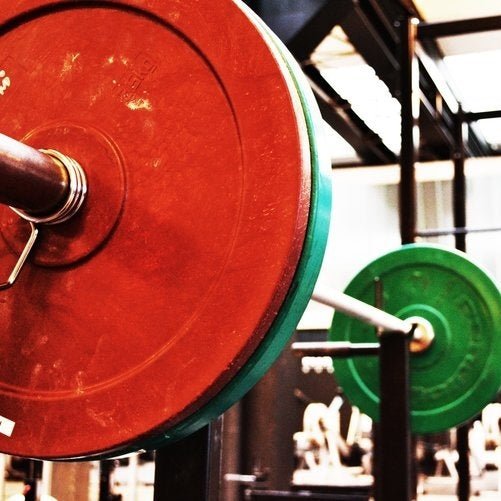Exploring the pros and cons of the CrossFit exercise craze.
Devotees of CrossFit have a deeply loyal connection to the fast-paced, high-intensity workout regimen. Doubters question the safety of CrossFit. So what's the scoop? Is CrossFit safe? Do CrossFit exercises carry a high risk of injury or other health complications? Let's take a look at the pros and cons of CrossFit and find out. But first, let's make sure we're clear on what CrossFit exercises are all about.
What is CrossFit?
CrossFit is the brand name for the exercise regimen developed by founder Greg Glassman in 1995, and which has since boomed into a global phenomenon. According to Glassman, "routine is the enemy." Therefore CrossFit workouts are different every day, and participants thrive on the variety. CrossFit exercises include a wide mix of functional full-body movements borrowed from weightlifting, gymnastics, running, cycling, and more.
Considered a very challenging workout, CrossFit aims to improve ten physical skills: cardiovascular/respiratory endurance, stamina, strength, flexibility, power, speed, agility, balance, coordination, and accuracy. "Our specialty is not specializing," states the CrossFit website. Instead, CrossFit is intended to make you stronger, fitter, and better at just about everything.
CrossFit exercises are most often performed in a "box" (the term for a CrossFit gym), in group classes led by a coach and characterized by friendly competition and a motivating environment.
What is a WOD?
You may have heard some of the seemingly strange CrossFit lingo and wondered what it means. The most common terms are WOD (workout of the day) and AMRAP (as many reps/rounds as possible). CrossFit exercises are organized into WODs, which form the core 10-20 minute high-intensity segments of CrossFit classes. A typical CrossFit class consists of a warm-up, skill development, the WOD, and a cool-down.
The WOD may include squats, lunges, sit-ups, push-ups, pull-ups, burpees, deadlifts, clean and jerks, snatches, kettlebell swings, box jumps, cycling, running, and more. A sample of a classic CrossFit WOD is performing three rounds for time of:
- Run 400 meters
- 21 kettlebell swings
- 12 pull-ups
Sounds simple enough, but try it as fast as you can and you'll surely feel the burn!
Benefits of CrossFit
CrossFit exercises, when done correctly, can provide plenty of benefits. As a full-body workout, it will recruit all your muscle groups and help develop your overall fitness. Specific benefits of CrossFit include:
- Muscle building
- Fat burning
- Cardiovascular fitness
- Increased power and speed
- Improved agility and balance
- Learning new exercises and proper form
- Sense of accomplishment; builds confidence
- Friendly competition; great for former athletes longing for a competitive fix
- Camaraderie and encouragement
- Accountability (your CrossFit classmates will likely check on you if you don't show up)
- Never boring
- Efficient (classes run 45-60 minutes)
- Focus on healthy lifestyle
Additionally, all CrossFit exercises and WODs are scalable, meaning they can be adapted to any fitness level or to people with injuries or other physical limitations. This allows anyone to join any CrossFit class, and it adds to the encouraging dynamic of the group session.
Is CrossFit Safe?
Like many forms of exercise, there can be risks associated with CrossFit. And like most forms of exercise, it's important to pay attention to proper technique, avoid over-doing it, and work with a reputable coach in order to avoid those risks.
While CrossFit exercises are generally safe, it's important to follow correct technique. Due to the fast and furious nature of WODs, some people may let proper form falter as they begin to tire, therefore becoming more prone to injury. Additionally, it's easy to get caught up in the competitive nature of CrossFit, failing to back off or stop when an exercise is too much. Be sure to start with an appropriate level of intensity and degree of difficulty for your current fitness, and make a smart and steady progression when adding weight or increasing effort.
A medical condition that is sometimes associated with CrossFit is called rhabdomyolysis, or rhabdo. Although rhabdo is extremely rare, it is serious and can even be life-threatening; therefore it's important to mention. Simply put, Rhabdo can occur when muscle tissue breaks down to the point that the muscle protein enters the bloodstream, which can in turn lead to kidney failure. Extreme exertion is one cause of rhabdo, especially when the individual is new to exercise, starting a new type of exercise, or returning from a break and attempting too much, too soon. To mitigate your rhabdo risk, be sure to listen to your body and avoid pushing yourself too hard, too fast. More information on rhabdo, including symptoms to watch out for, can be found here and here.
In summary, CrossFit is a fun, challenging, and never-boring group fitness program that can yield exceptional results and all-over conditioning. As with any fitness program, it's important to practice proper and safe techniques during CrossFit exercises, and to be wary of exerting yourself beyond what your body is realistically capable of. Listen to your body, progress at a reasonable rate, and focus on form and you'll find a motivating environment and plenty of fitness gains through CrossFit.





Leave a comment
All comments are moderated before being published.
This site is protected by reCAPTCHA and the Google Privacy Policy and Terms of Service apply.